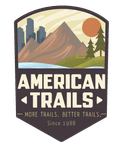With the increasing public demand for native plants and a push to find alternatives, learn from one landscape architect’s experience developing prairies in a variety of environments.
Webinar Outline
Amidst increasing public demand for native plants, a push to find alternatives to turf grass lawns, and a burgeoning awareness of the historic role grasslands have played in the ecological fabric of North Carolina, client demand for larger-scale herbaceous plantings is growing. However, information and precedents available to landscape architects practicing in North Carolina largely come from regions north and west of the state (as well as Europe), where climate conditions are not as analogous as one might hope. Plant height, competitiveness, bloom time, and lifespan can be radically different in North Carolina than even in states as close as Maryland or Tennessee. Even in our state’s larger metropolitan areas, sustained increases in temperature, especially at night, mean that Piedmont prairies in downtown Raleigh may behave differently than in downtown Roxboro. Additionally, many of the plants designers commonly regard as native come from states with significantly lower nighttime temperatures and shorter summers or are early successional plants with short life spans that disappear after a few years, leaving holes in prairies for invasive species to fill, potentially endangering enthusiasm for this critical, historical component of our ecosystem. As we work to preserve, restore, and promote native habitats in our work, successful large-scale herbaceous plantings can play an important role in achieving ecosystem service goals. Join Durham-based landscape architect, Preston Montague, for a presentation on his experience developing Piedmont prairies in a variety of environments in the rapidly developing Triangle.
Learning Objectives:
- Learn about Piedmont prairies from the perspective of a landscape architect
- Learn about successful prairie-building techniques
- Learn about unsuccessful prairie-building techniques
Trail Competencies
-
Trail Construction
- • Trail Finishwork
- • Water Management/Drainage Features
-
Relevant Trail Types
General. All trail types are relevant.
Learning Credits and CEUs

Learning credits will be available to attendees and are included in the registration fee. The length of the session will determine the number of hours/credits given. In order to obtain credits, attendees must fill out an evaluation survey for each session they attend, as well as complete a learning credit tracking form noting each session they are requesting credits for (or a quiz if virtual). This form (and complete instructions) will be available online as well at registration. Email the conference host or [email protected] with any questions.
American Trails is a certified provider and can offer the following learning credits and continuing education opportunities: AICP CM, LA CES (most HSW approved), NRPA CEU Equivalency Petition, and CEU/PDH Equivalency Petition for other accepting organizations.
You may also like
Related Upcoming Trainings
No related trainings
This training has been viewed 367 times.
